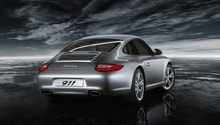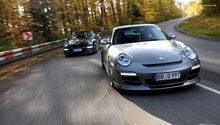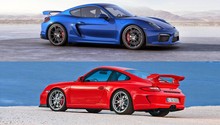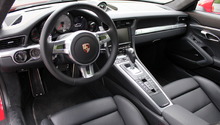Porsche 997: 997.1 Turbo vs. 997.2 Turbo
The 997 is the best-selling Porsche 911 of all time. But which 997 is the fastest? Find out here.
This article applies to the Porsche 997 (2005-2012).
The Porsche 977, or, as most people know it, the 911 made between 2005 and 2012, is one of the most technically advanced cars the German automaker has ever built. It came with a wide variety of powertrain options and in even more variants and flavors. This article focuses on the Turbo and Turbo S versions of the 997.
General Comparison
When the 997 debuted in 2005, the styling wasn't revolutionary, but probably better described as evolutionary. Porsche likes to keep the shape of the 911 intact, being the halo car that it is. To the untrained eye, the fact that the new 911 is wider and the headlights are more oval from older 911 models might be easy to overlook.

The Turbo variant, appeared a couple of years into the 997's production. Large intakes give the more powerful Porsche away, as does its performance numbers. Using a version of the naturally aspirated 3.6L from the GT3, Porsche fitted it with twin Borg Warner turbochargers with clever variable vane technology. This gave the 997 473 horsepower at 6,000 RPMs and 457 lb-feet of torque across a very wide range of RPMs. Porsche offered the Sport Chrono package, which allowed short 'overboost' mode that increased torque output to over 500 lb-feet.

When the second generation 997 became available in the 2010 model year, it received an all-new engine. It was an all-new 3.8L unit capable of 493 horsepower and an astonishing 480 lb-feet of torque, thanks to newly available direct injection and improved turbo. Overboost with the optional Sport Chrono package pushed it to 516 lb-feet of torque for short bursts. The other important update to come in the second generation 997 is the availability of a new 7-speed PDK dual-clutch transmission.
The Turbo S, introduced simultaneously, bested the Turbo model in every way. In Turbo S tune, the same engine generated 523 horsepower and 516 lb-feet of torque all the time-- no Sport Chrono overboost required. It was only available with the 7-speed PDK transmission. This may be the fastest 911 ever produced.

Which One is Best?
The first gen, commonly known as the 997.1 TT was built on a block from the existing GT3 block. This was a tried racing engine. The designers knew it could take a beating and hold up under much more rigorous use than what most 997s would be subjected to. While the factory tune was a respectable sub-500 horsepower configuration, race tunes often exceed 800-1,000 horsepower. The engine could take it. Available with a conventional 6-speed manual or 5-speed automatic with Tiptronic; naturally, the manual is the way to go here.
That's not to say the second generation Turbo, the 997.2TT, can't handle it. Built by Porsche to power the next generation of 911 Turbo models, it no doubt was designed to handle much more power as the generation aged. It makes more power and has better throttle response and torque curve. Find a Turbo S with its standard 7-speed PDK transmission, and you have the fastest 911 of the generation. The second generation 997 has the added benefit of improved torque vectoring technology in the all-wheel drive system.
It is popular to modify the first-gen Turbo engines to make more power, but as Porsche enthusiasts know, this is an expensive proposition. Better to find a second generation model that already makes the power you want with the transmission this engine deserves. Porsche's official numbers put 0-60 in this trim at 2.6 seconds.
Related Discussions
- Porsche 997 - Rennlist.com
- 997.1 vs. 997.2 Comparison - Rennlist.com






